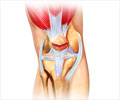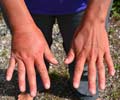Highlights
- Older adults are more likely to be physically inactive, which might make them more vulnerable to chronic pain.
- Physical activity in such individuals conditions the pain modulation behavior in an efficient way.
- Older adults who are physically active have lower pain perception and are better able to block responses to painful stimuli.
Older adults are more likely to be less physically active, which might make them more vulnerable to chronic pain.
Any pain that lasts for more than 12 weeks is considered to be chronic. In U.S, the prevalence of chronic pain among the elderly is estimated to be as high as 60% to 75%.
In U.S, nearly 50 million adults have significant chronic pain or severe pain, according to a study by National Institutes of Health’s National Center for Complementary and Integrative Health (NCCIH).
According to tests conducted by by Kelly M. Naugle, PhD, and colleagues of Indiana University-Purdue University Indianapolis, it was shown that physically active older adults have lower pain perception and are better able to block responses to painful stimuli.
Pain Modulation Test
To measure their level of physical activity, they wore an activity monitor device for one week.
They then underwent two tests of pain modulation:
- "temporal summation," which measured the production or facilitation of pain responses to repeated pain stimuli
- "conditioned pain modulation," that assessed the reduction or inhibition of pain responses to competing pain stimuli
People with higher pain facilitation and lower pain inhibition are more likely to develop problems with chronic pain.
Results
Results showed that older adults who engaged in frequent moderate-to-vigorous physical activity had lower pain scores on the temporal summation test, indicating less pain facilitation. They perceived less production of pain.
Those who did more light physical activity or had less sedentary time per day had lower pain scores on the conditioned pain modulation test, indicating better pain inhibition. They were better able to block pain perceptions.
These differences may be relevant to the central sensitization process which is thought to be responsible for the transition from acute to chronic pain.
The results suggest that higher levels of physical activity are related to more efficient conditioned pain modulation.
"Our data suggest that low levels of sedentary behavior and greater light physical activity may be critical in maintaining effective endogenous pain inhibitory function in older adults," Dr. Naugle and coauthors write.
Further studies will be needed to test the effects of physical activity programs to reduce and prevent pain in older adults.
The study is presented in PAIN, the official publication of the International Association for the Study of Pain (IASP). The journal is published by Wolters Kluwer.
References
- NIH Study Shows Prevalence of Chronic or Severe Pain in U.S. Adults - (http://americanpainsociety.org/about-us/press-room/nih-study-shows-prevalence-of-chronic-or-severe-pain-in-u-s-adults)
- Author name. Physical activity behavior predicts endogenous pain modulation in older adults. PAIN; (2017) doi: 10.1097/j.pain.0000000000000769
Source-Medindia












